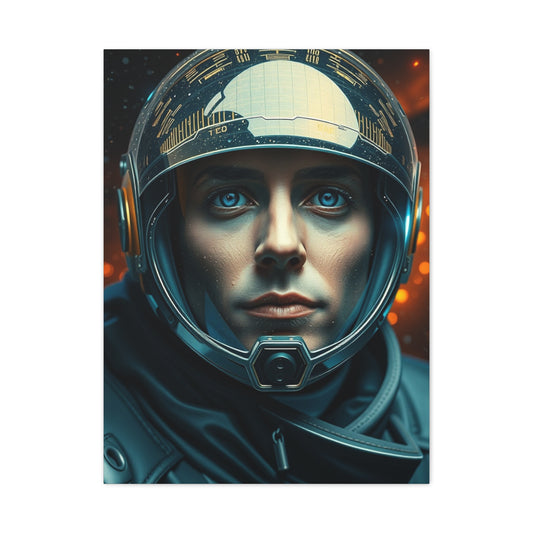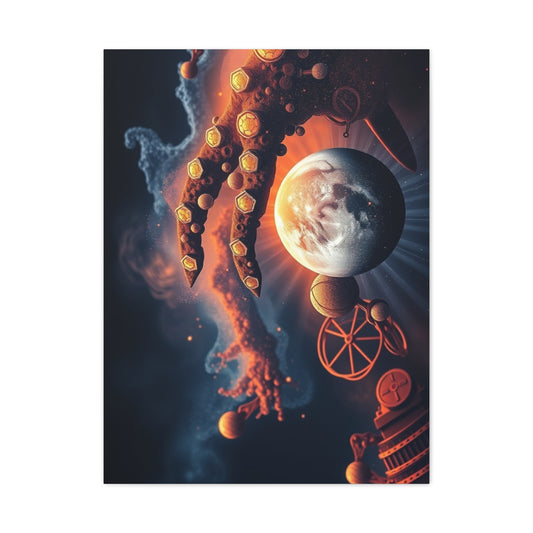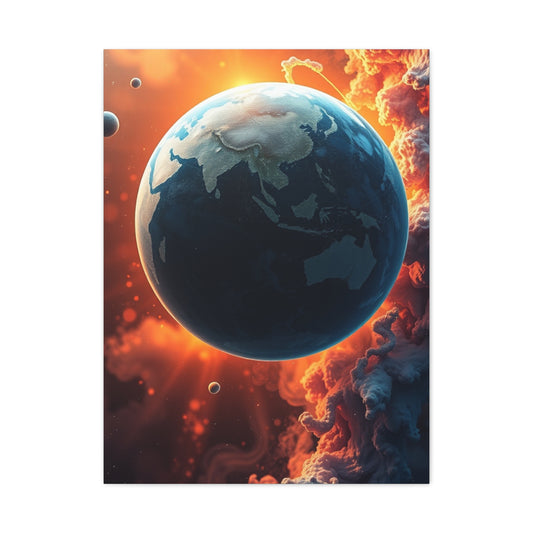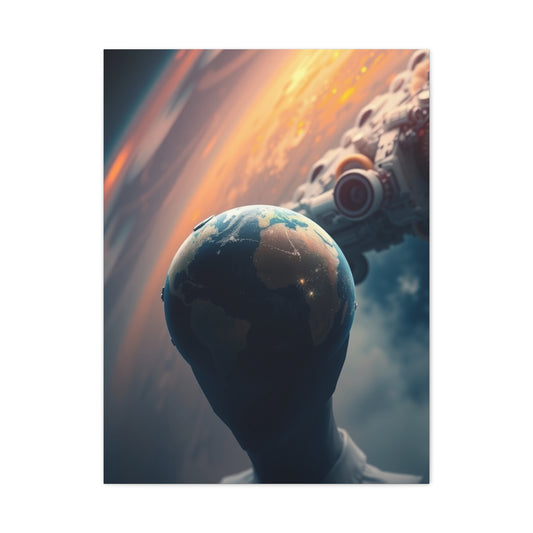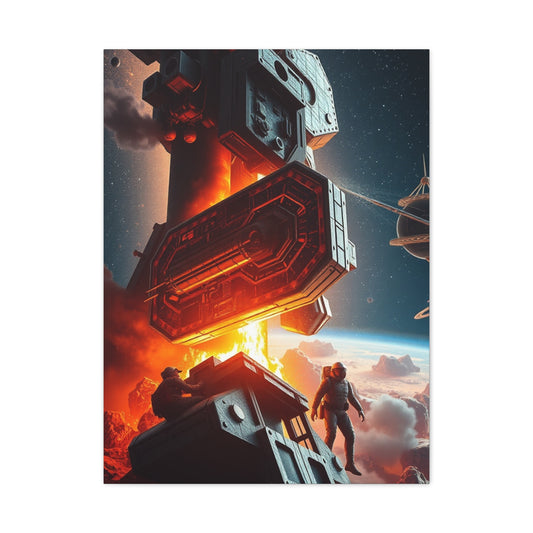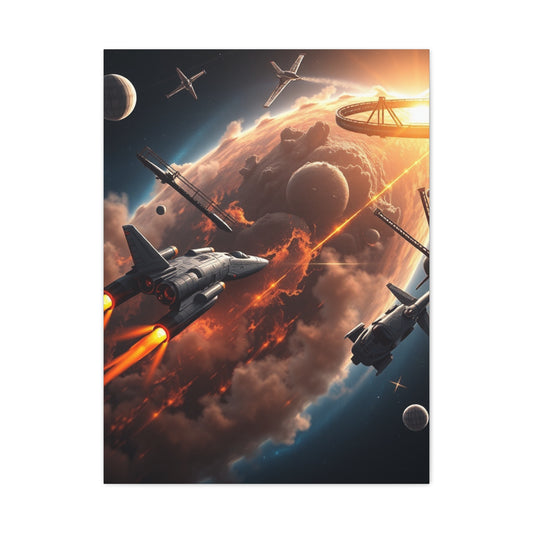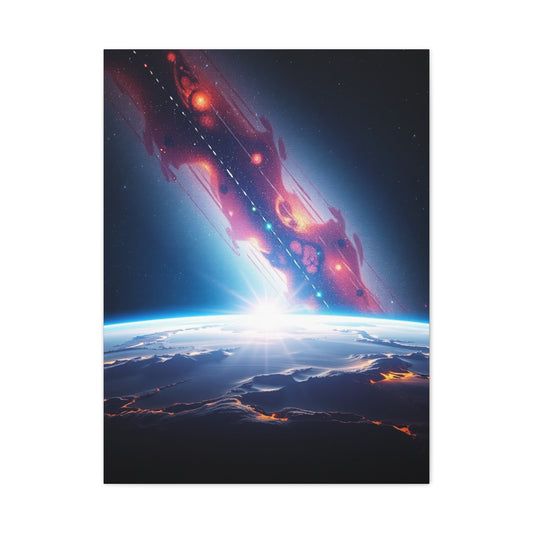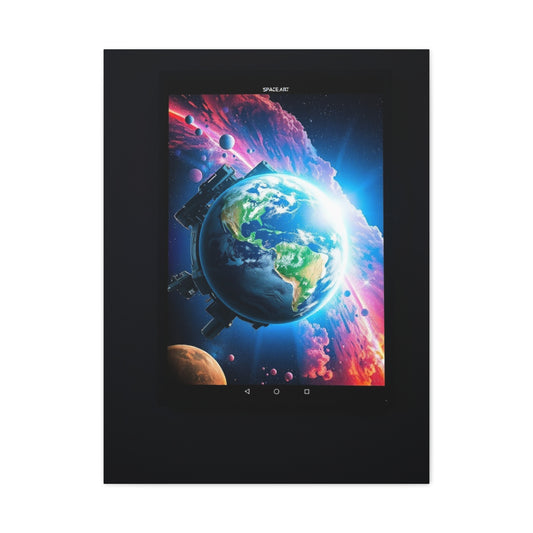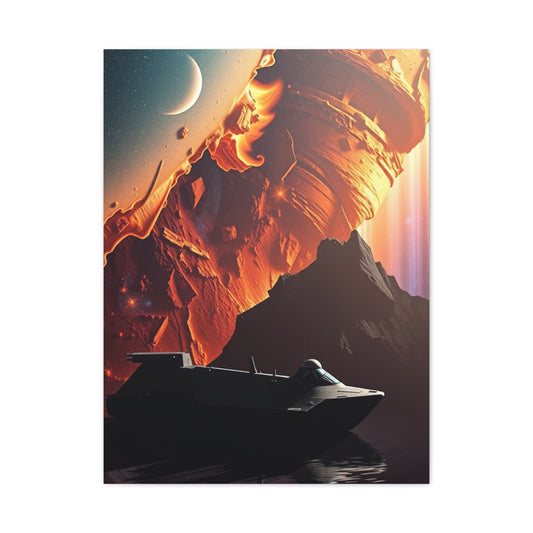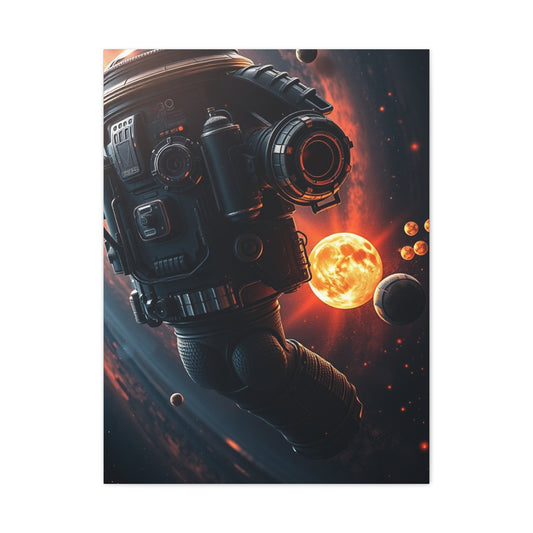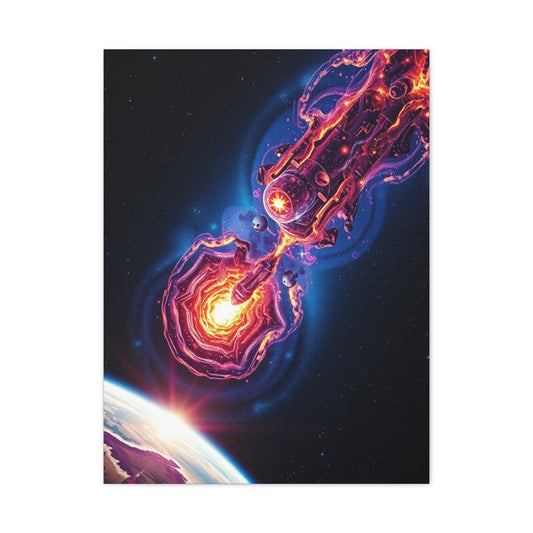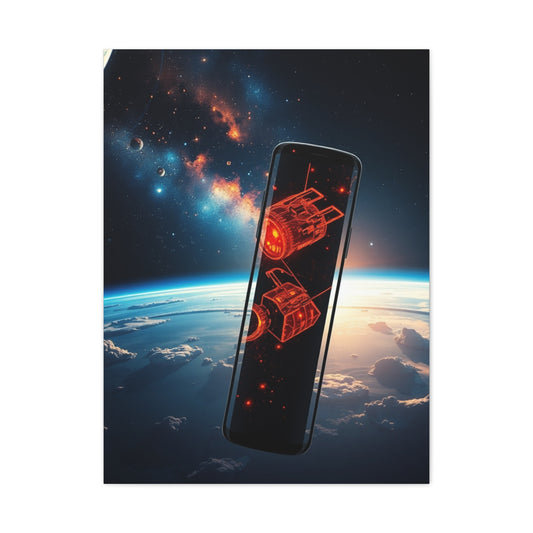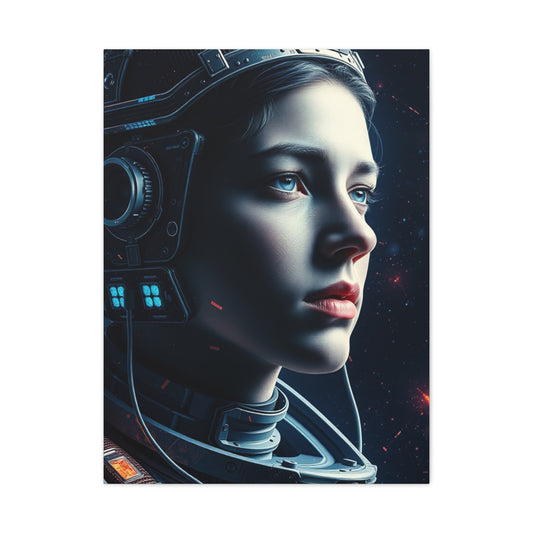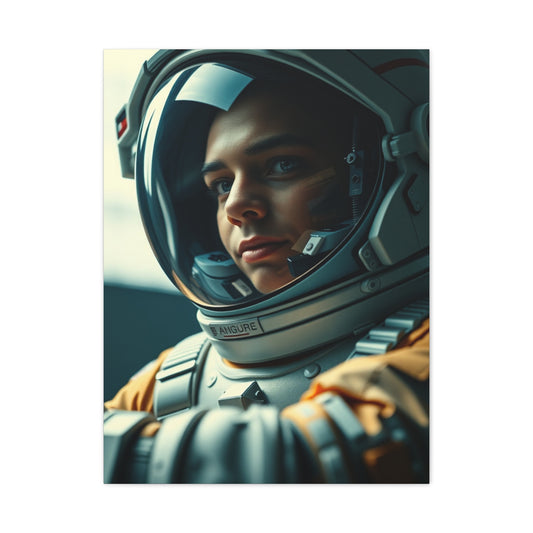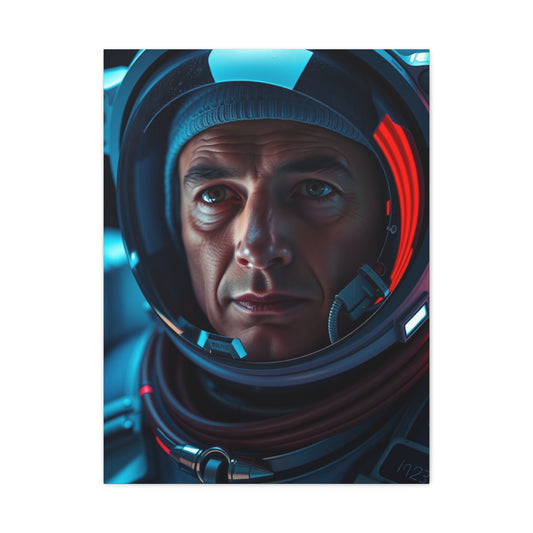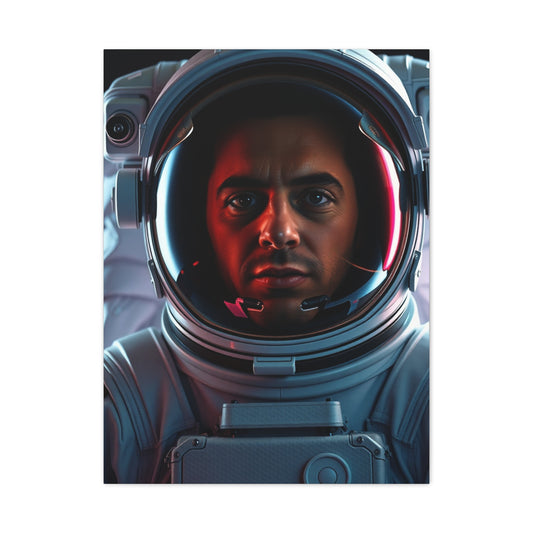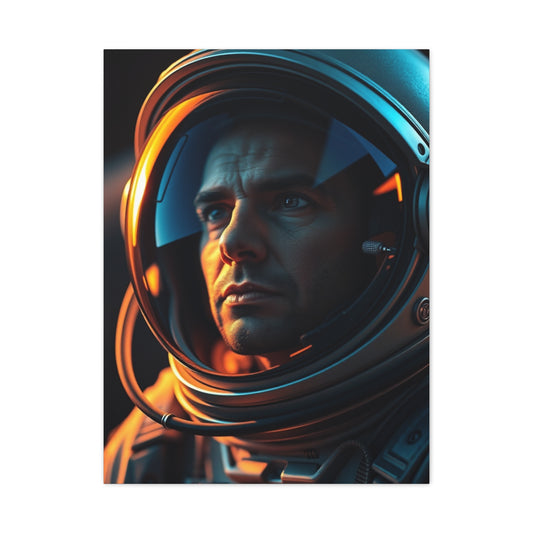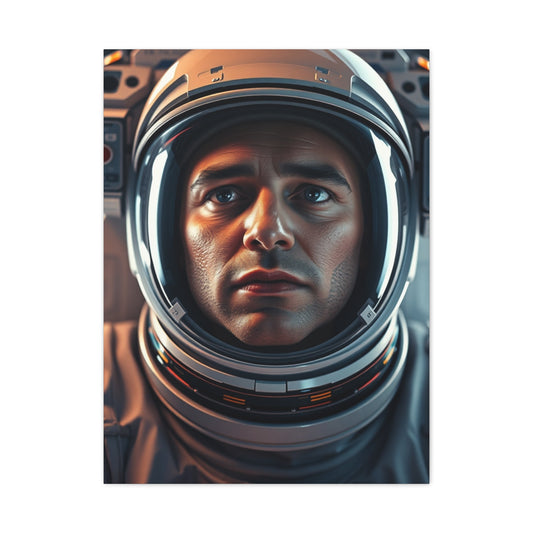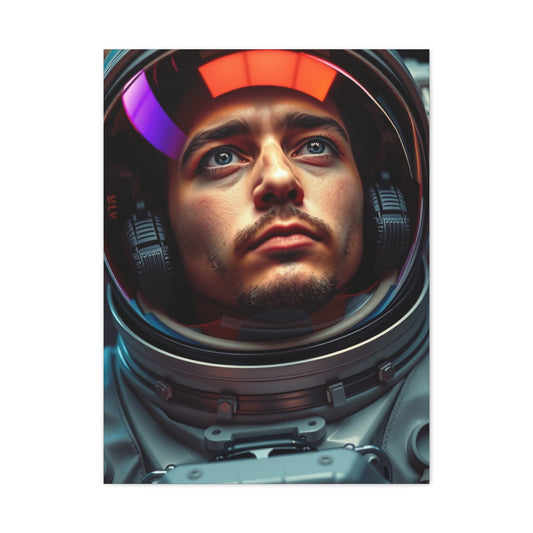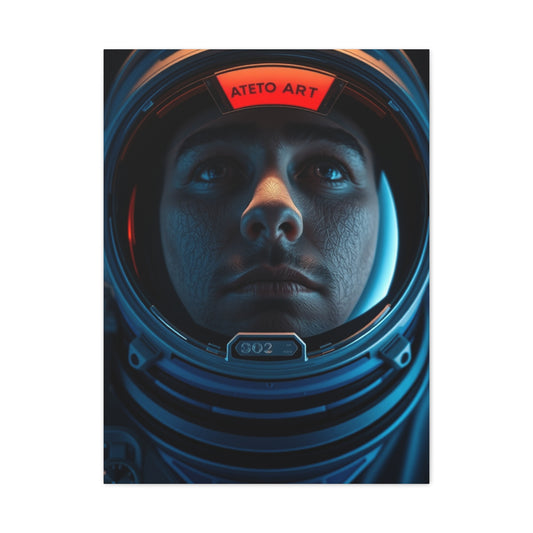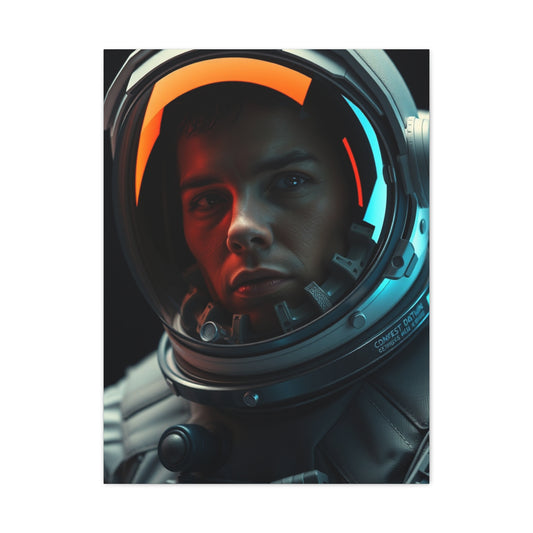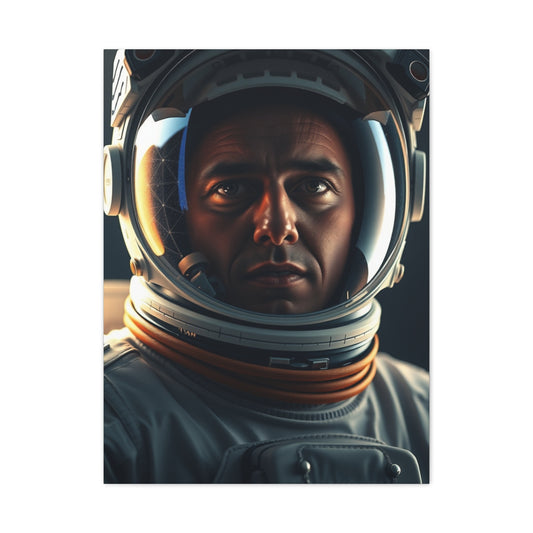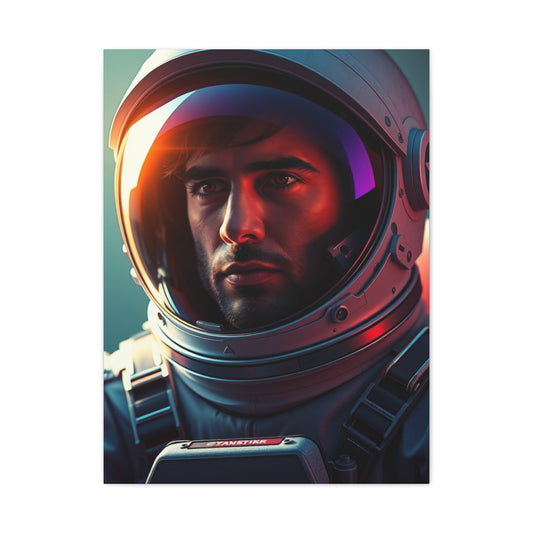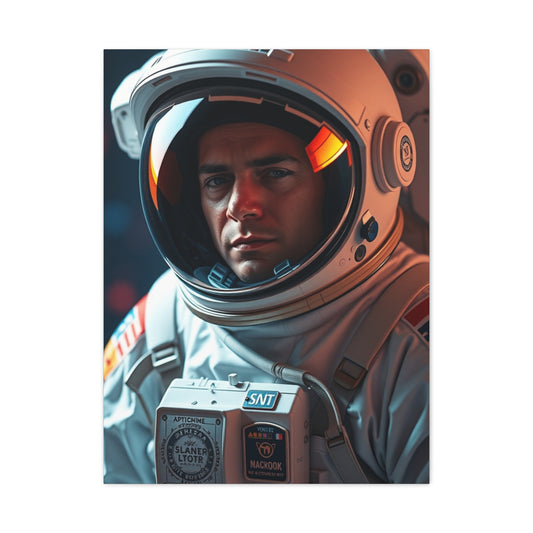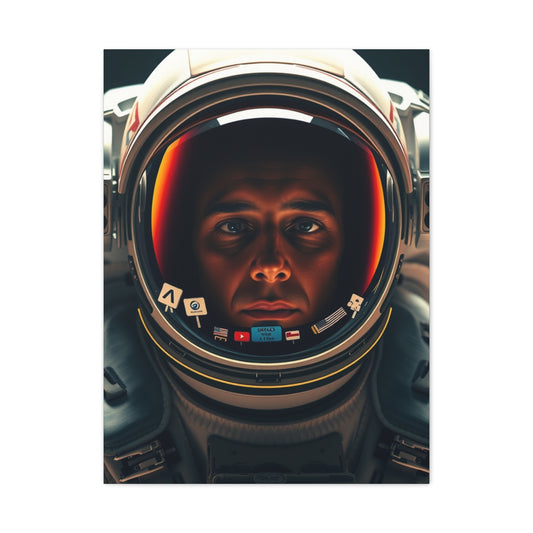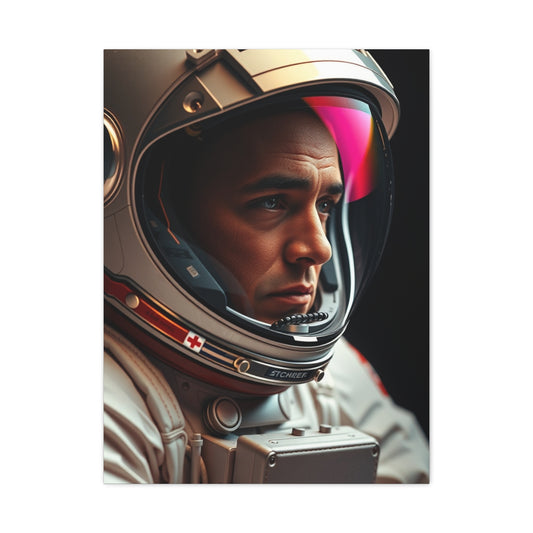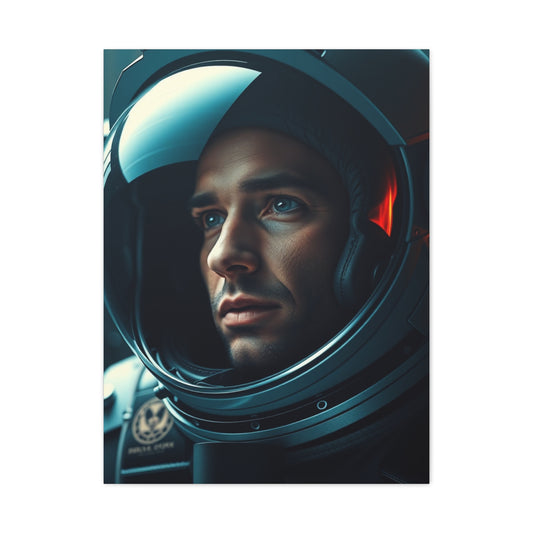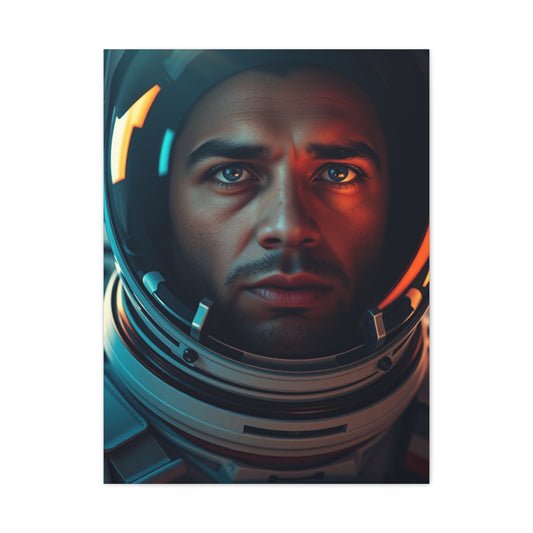-
Stellar Opulence Artwork Wall Art & Canvas Print
Regular price From $141.23 USDRegular priceUnit price per -
Heavenly Sphere Artistry Wall Art & Canvas Print
Regular price From $141.23 USDRegular priceUnit price per -
Interstellar Grace Canvas Wall Art & Canvas Print
Regular price From $141.23 USDRegular priceUnit price per -
Lunar Radiance Portrait Wall Art & Canvas Print
Regular price From $141.23 USDRegular priceUnit price per -
Galactic Elegance Display Wall Art & Canvas Print
Regular price From $141.23 USDRegular priceUnit price per -
Ethereal Universe Artwork Wall Art & Canvas Print
Regular price From $141.23 USDRegular priceUnit price per -
Nebula Majesty Canvas Wall Art & Canvas Print
Regular price From $141.23 USDRegular priceUnit price per -
Galactic Luminosity Canvas Wall Art & Canvas Print
Regular price From $141.23 USDRegular priceUnit price per -
Astral Elysium Wall Art Wall Art & Canvas Print
Regular price From $141.23 USDRegular priceUnit price per -
Celestial Allure Artwork Wall Art & Canvas Print
Regular price From $141.23 USDRegular priceUnit price per -
Infinite Cosmos Elegance Wall Art & Canvas Print
Regular price From $141.23 USDRegular priceUnit price per -
Orions Grandeur Canvas Wall Art & Canvas Print
Regular price From $141.23 USDRegular priceUnit price per -
Astral Harmony Wall Piece Wall Art & Canvas Print
Regular price From $141.23 USDRegular priceUnit price per -
Stardust Symphony Canvas Wall Art & Canvas Print
Regular price From $141.23 USDRegular priceUnit price per -
Cosmic Splendor Tapestry Wall Art & Canvas Print
Regular price From $141.23 USDRegular priceUnit price per -
Abstract Moon & Space Poster Wall Art & Canvas Prints
Regular price From $141.23 USDRegular priceUnit price per -
Astronomical Tranquility Art Wall Art & Canvas Print
Regular price From $141.23 USDRegular priceUnit price per -
Lunar Explorer Illumination Wall Art & Canvas Print
Regular price From $141.23 USDRegular priceUnit price per -
Celestial Voyager Masterpiece Wall Art & Canvas Print
Regular price From $141.23 USDRegular priceUnit price per -
Ethereal Cosmos Dreamscape Wall Art & Canvas Print
Regular price From $141.23 USDRegular priceUnit price per -
Heavenly Pathfinder Artistry Wall Art & Canvas Print
Regular price From $141.23 USDRegular priceUnit price per -
Orbital Odyssey Tapestry Wall Art & Canvas Print
Regular price From $141.23 USDRegular priceUnit price per -
Stellar Explorer Portrait Wall Art & Canvas Print
Regular price From $141.23 USDRegular priceUnit price per -
Lunar Expedition Masterwork Wall Art & Canvas Print
Regular price From $141.23 USDRegular priceUnit price per -
Stellar Navigator Tableau Wall Art & Canvas Print
Regular price From $141.23 USDRegular priceUnit price per -
Cosmic Navigator Enchantment Wall Art & Canvas Print
Regular price From $141.23 USDRegular priceUnit price per -
Nebula Pilgrim Canvas Wall Art & Canvas Print
Regular price From $141.23 USDRegular priceUnit price per -
Astral Expedition Elegance Wall Art & Canvas Print
Regular price From $141.23 USDRegular priceUnit price per -
Astral Journey Elegance Wall Art & Canvas Print
Regular price From $141.23 USDRegular priceUnit price per -
Galactic Odyssey Canvas Wall Art & Canvas Print
Regular price From $141.23 USDRegular priceUnit price per -
Solar Voyage Opus Wall Art & Canvas Print
Regular price From $141.23 USDRegular priceUnit price per -
Interstellar Reverie Art Wall Art & Canvas Print
Regular price From $141.23 USDRegular priceUnit price per -
Galactic Pilgrim Canvas Wall Art & Canvas Print
Regular price From $141.23 USDRegular priceUnit price per -
Galaxy Sojourner Tableau Wall Art & Canvas Print
Regular price From $141.23 USDRegular priceUnit price per -
Celestial Quest Panorama Wall Art & Canvas Print
Regular price From $141.23 USDRegular priceUnit price per -
AstroSynthesis Masterpiece Wall Art & Canvas Print
Regular price From $141.23 USDRegular priceUnit price per -
Astronaut with American Flag Wall Art & Canvas Prints
Regular price From $141.23 USDRegular priceUnit price per -
Astronaut Skull Wall Art & Canvas Prints
Regular price From $141.23 USDRegular priceUnit price per -
Astronaut Throwing Cactus Marijuana Wall Art & Canvas Prints
Regular price From $141.23 USDRegular priceUnit price per
Innovative Astronomical Wall Art: Enhancing Office Productivity and Unlocking Creative Potential
Contemporary workplace environments frequently suffer from uninspiring design choices that inadvertently stifle creativity, diminish employee engagement, and perpetuate monotonous atmospheric conditions that drain intellectual vitality from professional spaces. Traditional corporate aesthetics, characterized by bland neutral color palettes, generic motivational displays, and harsh artificial illumination, create psychological barriers that prevent teams from accessing their full creative potential and innovative capabilities.
However, strategic implementation of carefully curated astronomical wall art can fundamentally transform ordinary office environments into dynamic spaces that foster intellectual curiosity, enhance cognitive performance, and inspire unprecedented levels of professional achievement. The integration of cosmic imagery, celestial photography, and space exploration themes creates powerful psychological anchors that remind employees of humanity's greatest achievements while encouraging them to pursue ambitious goals and breakthrough innovations.
This comprehensive exploration examines the profound impact that astronomy-inspired wall décor can have on workplace productivity, employee satisfaction, and organizational culture, providing detailed insights into selection strategies, placement optimization, and the measurable benefits that result from thoughtful integration of space-themed artistic elements. Through scientific research, practical implementation guidance, and inspiring examples, we will demonstrate why celestial wall art represents the optimal choice for modern professional environments seeking to maximize human potential and creative output.
The Neuropsychological Foundation of Visual Environment Design
The human brain processes visual information with remarkable sophistication, creating complex neurological responses that directly influence cognitive performance, emotional stability, and creative thinking patterns. Environmental psychology research has conclusively demonstrated that workplace visual elements significantly impact employee behavior, decision-making processes, and overall professional satisfaction levels, making strategic art selection a critical component of effective organizational management.
Neuroscientific studies reveal that exposure to inspiring imagery activates specific brain regions associated with motivation, goal-setting, and innovative problem-solving behaviors. When employees regularly encounter visually stimulating content that evokes wonder, curiosity, and intellectual engagement, their neural pathways develop enhanced connections that support sustained creative thinking and analytical reasoning capabilities.
The phenomenon known as "environmental priming" explains how surrounding visual elements subconsciously influence thought patterns, behavioral choices, and performance outcomes. Astronomical imagery, with its inherent associations with exploration, discovery, and technological advancement, creates powerful priming effects that encourage employees to approach challenges with greater ambition, innovative thinking, and solution-oriented mindsets.
Research conducted by leading cognitive scientists indicates that employees working in visually enriched environments demonstrate measurably improved focus, enhanced memory retention, and increased capacity for complex problem-solving tasks. These improvements result from the brain's natural tendency to maintain higher alertness levels and cognitive engagement when presented with intellectually stimulating visual content.
Furthermore, the psychological concept of "attention restoration" suggests that certain types of imagery can help combat mental fatigue and cognitive depletion that commonly occur during intensive work periods. Space-themed artwork, with its vast scales and contemplative qualities, provides natural opportunities for brief mental restoration that refreshes cognitive resources and maintains peak performance levels throughout demanding workdays.
The color psychology associated with astronomical imagery contributes additional neurological benefits, as the deep blues, cosmic purples, and stellar whites commonly found in space photography have been scientifically proven to promote calm focus, reduce anxiety levels, and enhance creative thinking processes. These color combinations create optimal psychological conditions for both individual concentration and collaborative teamwork activities.
Quantifiable Productivity Enhancement Through Strategic Art Integration
Extensive workplace research has produced compelling evidence that thoughtfully selected wall art can deliver measurable improvements in employee productivity, job satisfaction, and overall organizational performance metrics. Multiple peer-reviewed studies have documented significant positive correlations between visually engaging office environments and enhanced professional outcomes across diverse industry sectors.
The landmark University of Exeter research study, involving over 2,000 office workers across multiple countries, revealed that employees in art-enriched environments demonstrated 17% higher productivity levels compared to those working in bare or minimally decorated spaces. This substantial improvement translates into significant economic benefits for organizations willing to invest in strategic environmental design initiatives.
Additional research conducted by the Harvard Business Review found that employees working in visually stimulating environments reported 25% higher job satisfaction scores, 31% better workplace relationships, and 38% increased likelihood of recommending their employer to potential candidates. These improvements in employee engagement directly correlate with reduced turnover costs, enhanced recruitment success, and improved organizational reputation metrics.
The psychological mechanisms underlying these productivity improvements involve multiple interconnected factors that compound to create substantial performance enhancements. Visual stimulation increases alertness and cognitive engagement, while inspiring imagery provides ongoing motivation that sustains effort levels during challenging tasks and long working periods.
Stress reduction represents another critical factor contributing to productivity improvements in art-enriched environments. Numerous studies have documented significant decreases in workplace stress hormones, including cortisol and adrenaline, among employees who regularly interact with aesthetically pleasing visual content. Lower stress levels directly translate into improved decision-making capabilities, enhanced problem-solving skills, and reduced error rates across various professional activities.
The collaborative benefits of inspiring wall art extend beyond individual performance improvements to encompass enhanced team dynamics and group creativity. Shared visual experiences create common reference points that facilitate communication, encourage innovative brainstorming sessions, and foster collaborative problem-solving approaches that leverage diverse perspectives and expertise.
Quality-of-life improvements resulting from enhanced workplace environments also contribute to productivity gains through reduced absenteeism, decreased sick leave usage, and improved employee retention rates. Workers who genuinely enjoy their physical work environment demonstrate greater commitment to their roles and organizations, resulting in sustained high-performance levels and reduced recruitment costs.
Comprehensive Analysis of Psychological Benefits in Professional Settings
The psychological impact of astronomical wall art extends far beyond superficial aesthetic improvements to encompass profound influences on employee mental health, creative capacity, and professional fulfillment. Understanding these psychological mechanisms enables organizations to make informed decisions about environmental design investments that support both individual well-being and collective organizational success.
Cognitive stimulation represents one of the most significant psychological benefits associated with space-themed artwork. The inherent complexity and intellectual richness of astronomical imagery naturally engage analytical thinking processes, encouraging employees to approach routine tasks with enhanced mental agility and creative problem-solving approaches. This cognitive engagement helps prevent the mental stagnation that can occur in monotonous work environments.
The inspirational quality of space exploration imagery taps into fundamental human motivations related to achievement, discovery, and transcendence of limitations. When employees regularly encounter visual reminders of humanity's greatest technological and exploratory achievements, they experience psychological priming effects that encourage ambitious goal-setting, persistent effort, and innovative solution development.
Perspective-taking benefits emerge from exposure to cosmic imagery that emphasizes the vast scale of the universe and humanity's place within it. This broadened perspective can help employees maintain emotional balance during stressful periods, approach interpersonal conflicts with greater wisdom, and maintain focus on long-term objectives rather than becoming overwhelmed by short-term challenges.
The meditative qualities inherent in many astronomical images provide opportunities for brief mental restoration throughout demanding workdays. The calming visual patterns, symmetrical compositions, and peaceful color palettes commonly found in space photography create natural opportunities for stress reduction and mental refreshment that support sustained high performance levels.
Social psychology research indicates that shared exposure to inspiring imagery can strengthen team cohesion and collective identity formation. When employees regularly encounter the same meaningful visual content, they develop shared reference points and common aspirational frameworks that facilitate collaboration, communication, and mutual understanding across diverse professional backgrounds.
The educational dimension of astronomical artwork contributes additional psychological benefits by satisfying natural human curiosity and providing opportunities for intellectual growth. Employees who learn about cosmic phenomena, space exploration history, or astronomical discoveries through workplace art report increased job satisfaction and greater sense of personal development within their professional roles.
Cultural psychology studies suggest that space-themed imagery can help organizations transcend traditional hierarchical boundaries and cultural divisions by providing universal themes that appeal across demographic differences. The shared human fascination with space exploration creates common ground that can improve workplace inclusivity and cross-cultural understanding.
Strategic Implementation Guidelines for Maximum Impact
Successful integration of astronomical wall art requires careful consideration of multiple factors including space utilization, viewing angles, lighting conditions, and thematic coherence with existing organizational culture and design elements. Strategic planning ensures that art investments deliver maximum psychological and practical benefits while avoiding potential implementation challenges.
Scale considerations play a crucial role in determining the psychological impact of astronomical artwork. Large-format pieces create dramatic focal points that can anchor entire room designs while providing sufficient visual detail to maintain long-term interest and engagement. However, oversized artwork requires adequate viewing distances and wall space to be appreciated properly without overwhelming smaller office areas.
Placement optimization involves understanding traffic patterns, typical viewing positions, and functional requirements of different office zones. High-impact locations such as reception areas, conference rooms, and main corridors provide maximum exposure opportunities while creating positive first impressions for clients and visitors. Strategic placement near collaborative work areas can enhance team creativity and innovation processes.
Lighting design integration ensures that astronomical artwork is presented under optimal viewing conditions that accurately represent colors, enhance detail visibility, and create appropriate atmospheric effects. Professional lighting systems can dramatically amplify the psychological impact of space-themed imagery while providing flexible illumination options for different times of day and functional requirements.
Thematic coherence considerations involve selecting artwork that aligns with organizational values, industry characteristics, and existing design elements while avoiding conflicts with established branding or cultural messaging. Technology companies might emphasize space exploration achievements, while financial organizations could focus on cosmic imagery that suggests precision, analysis, and long-term thinking.
Budget optimization strategies enable organizations to achieve significant visual impact while maintaining fiscal responsibility through careful selection of reproduction formats, framing options, and installation methods. High-quality digital prints can provide excellent visual results at reasonable costs, while professional mounting and presentation enhance perceived value and longevity.
Change management approaches help ensure smooth implementation and positive employee reception of new environmental elements. Involving team members in selection processes, providing educational context about chosen imagery, and explaining the psychological benefits can build enthusiasm and maximize the positive impact of environmental changes.
Innovative Cosmic Design Concepts for Modern Workspaces
Contemporary office design increasingly embraces bold visual statements that reflect organizational personality while supporting functional requirements and employee well-being. These innovative cosmic design concepts demonstrate how astronomical themes can be integrated into diverse professional environments to create distinctive and inspiring workplace experiences.
The first transformative concept focuses on creating immersive galactic environments that transport employees into cosmic settings through carefully coordinated visual elements, lighting effects, and spatial design. This approach involves selecting complementary astronomical images that work together to create unified environmental experiences rather than isolated decorative elements. Large-scale nebula photography combined with planetary close-ups and deep space imagery can create progressive visual narratives that engage viewers and encourage exploration.
Interactive astronomical displays represent the second innovative concept, incorporating digital technologies that allow employees to explore cosmic content, access educational information, and participate in engaging learning experiences. These installations can feature rotating image collections, real-time astronomical data feeds, or augmented reality elements that provide deeper engagement with space exploration themes while supporting ongoing intellectual stimulation.
The third concept emphasizes biographical and historical integration, combining astronomical imagery with information about space exploration pioneers, scientific discoveries, and technological achievements. This approach creates educational opportunities while providing inspirational role models and historical context that can motivate ambitious thinking and innovative problem-solving approaches.
Environmental storytelling represents the fourth innovative concept, using carefully sequenced astronomical imagery to create narrative experiences that guide viewers through cosmic journeys or scientific discovery processes. This approach can transform ordinary hallways into engaging exploration experiences that provide mental stimulation during routine movements throughout the office environment.
The fifth transformative concept involves seasonal or project-specific rotation systems that maintain visual freshness while accommodating changing organizational needs and employee interests. These flexible approaches enable ongoing environmental evolution that prevents visual stagnation while providing opportunities to highlight different aspects of space exploration or astronomical phenomena throughout the year.
Collaborative creation initiatives represent an advanced implementation approach that involves employees in selecting, customizing, or even creating astronomical artwork that reflects collective interests and organizational identity. These participatory processes build ownership and engagement while ensuring that environmental choices genuinely resonate with the people who interact with them daily.
Scientific Research Supporting Astronomical Art Selection
Extensive academic research provides compelling evidence for the specific benefits associated with space-themed artwork in professional environments. Multiple peer-reviewed studies have documented measurable improvements in cognitive performance, creative thinking, and employee well-being when astronomical imagery is strategically integrated into workplace designs.
Environmental psychology research conducted at leading universities has consistently demonstrated that exposure to imagery suggesting vastness, exploration, and scientific achievement triggers specific neurological responses that enhance cognitive flexibility and innovative thinking capabilities. Brain imaging studies reveal increased activity in regions associated with creative problem-solving and strategic thinking when participants view astronomical content compared to generic office artwork.
Occupational health studies have documented significant stress reduction benefits associated with exposure to cosmic imagery, particularly content featuring calming color palettes and symmetrical compositions commonly found in space photography. Physiological measurements including heart rate variability, cortisol levels, and blood pressure readings show measurable improvements among employees working in environments featuring astronomical wall art.
Productivity research has established clear correlations between inspiring visual environments and enhanced work performance across diverse professional sectors. Longitudinal studies tracking employee output, quality metrics, and innovation indicators consistently show superior results in offices featuring thought-provoking artwork compared to sterile or traditionally decorated environments.
Social psychology research reveals that shared exposure to inspiring astronomical imagery can strengthen team cohesion, improve communication patterns, and enhance collaborative problem-solving effectiveness. Groups working in spaces featuring cosmic themes demonstrate increased willingness to share ideas, take creative risks, and support innovative initiatives compared to teams in conventional office environments.
Attention research indicates that astronomical imagery provides optimal balance between visual stimulation and cognitive restoration, helping employees maintain focus during intensive work periods while providing opportunities for brief mental refreshment that prevents cognitive fatigue and maintains peak performance levels throughout demanding workdays.
Cultural and Organizational Identity Enhancement
The selection and presentation of astronomical wall art provides powerful opportunities for organizations to express their values, aspirations, and cultural identity while creating distinctive environmental experiences that differentiate them from competitors and attract talented professionals seeking inspiring workplace cultures.
Forward-thinking organizations increasingly recognize that environmental design communicates important messages about company personality, priorities, and expectations for employee performance and creativity. Space-themed artwork naturally conveys associations with innovation, exploration, technological advancement, and ambitious goal-setting that align perfectly with modern organizational aspirations and competitive requirements.
Brand differentiation through environmental design helps organizations stand out in competitive talent markets while creating memorable impressions for clients, partners, and visitors. Unique and inspiring office environments contribute to positive reputation building while supporting recruitment efforts and employee retention initiatives through enhanced workplace satisfaction and pride.
Cultural integration considerations involve aligning astronomical artwork selections with existing organizational values, mission statements, and strategic objectives to create coherent environmental narratives that reinforce desired behaviors and attitudes. Space exploration themes naturally support cultures emphasizing innovation, collaboration, continuous learning, and ambitious achievement.
Industry-specific applications demonstrate how astronomical themes can be adapted to diverse professional contexts while maintaining relevance and impact. Technology companies might emphasize cutting-edge space exploration achievements, while consulting firms could focus on cosmic imagery suggesting analytical thinking and strategic perspective.
International and multicultural considerations recognize that space exploration represents universal human aspirations that transcend cultural boundaries while providing common ground for diverse teams and global organizations. Astronomical themes can help create inclusive environments that celebrate shared human achievements and curiosity.
Technology Integration and Digital Enhancement Opportunities
Modern office environments increasingly incorporate digital technologies that can amplify the impact of astronomical wall art through interactive features, dynamic content, and personalized experiences that engage employees while supporting functional requirements and organizational objectives.
Digital display systems enable rotation of extensive astronomical image collections while providing opportunities for real-time content updates, educational information integration, and interactive exploration features. High-resolution screens can showcase detailed space imagery with clarity that rivals traditional print media while offering flexibility for ongoing content management and customization.
Augmented reality applications can overlay additional information, interactive elements, or personalized content onto traditional astronomical artwork, creating enhanced engagement opportunities that support both aesthetic appreciation and educational experiences. These technologies enable deeper exploration of cosmic themes while maintaining the visual impact of carefully selected static imagery.
Smart lighting systems can be programmed to complement astronomical artwork through automated color temperature adjustments, intensity variations, and dynamic lighting effects that enhance viewing experiences while supporting circadian rhythm maintenance and energy efficiency objectives.
Integration with building management systems enables coordination between astronomical art displays, environmental controls, and occupancy patterns to optimize viewing conditions while supporting sustainability goals and operational efficiency requirements.
Data analytics capabilities can track engagement patterns, measure psychological responses, and evaluate the effectiveness of different astronomical content types in supporting productivity and satisfaction objectives. This information enables evidence-based optimization of art selection and presentation strategies over time.
Voice-activated systems can provide information about displayed astronomical imagery, enable content requests, and facilitate interactive learning experiences that deepen employee engagement with space exploration themes while supporting ongoing intellectual development and curiosity satisfaction.
Practical Implementation Strategies and Best Practices
Successful implementation of astronomical wall art requires systematic planning that addresses selection criteria, installation requirements, maintenance considerations, and ongoing management processes to ensure sustained positive impact and return on investment over extended time periods.
Assessment procedures should evaluate existing space characteristics, employee preferences, organizational culture factors, and functional requirements to inform art selection decisions that align with specific workplace needs and objectives. Comprehensive evaluation ensures that chosen pieces will provide maximum benefit while avoiding potential conflicts or implementation challenges.
Vendor selection involves evaluating print quality, material durability, framing options, and service capabilities to ensure that astronomical artwork meets professional presentation standards while providing long-term value and visual impact. Established suppliers with expertise in commercial installations can provide valuable guidance and support throughout implementation processes.
Installation planning addresses mounting requirements, safety considerations, lighting integration, and coordination with other environmental elements to ensure proper presentation and optimal viewing conditions. Professional installation services can prevent damage while ensuring that artwork is securely and attractively positioned for maximum impact.
Maintenance protocols establish procedures for cleaning, inspection, and protective measures that preserve artwork condition and appearance over time. Regular maintenance prevents deterioration while ensuring continued positive impact on employees and visitors throughout the artwork's service life.
Change management strategies help employees understand and appreciate new environmental elements while building enthusiasm for ongoing workplace improvement initiatives. Communication about the psychological benefits and cultural significance of astronomical themes can enhance reception and maximize positive impact.
Evaluation metrics enable ongoing assessment of artwork effectiveness through employee feedback, productivity measurements, and satisfaction surveys that provide evidence of return on investment while identifying opportunities for future improvements and expansions.
Budget Optimization and Cost-Effectiveness Analysis
Strategic budget planning enables organizations to achieve significant environmental impact through astronomical wall art while maintaining fiscal responsibility and demonstrating clear return on investment through measurable improvements in employee performance and satisfaction metrics.
Cost-benefit analysis should consider both direct expenses and indirect benefits including productivity improvements, reduced turnover costs, enhanced recruitment success, and improved organizational reputation that result from creating inspiring workplace environments. The substantial financial benefits typically justify moderate investments in quality environmental design.
Format options provide flexibility for achieving desired visual impact within various budget constraints through selection of print media, sizing options, and presentation methods that optimize cost-effectiveness while maintaining professional appearance standards. High-quality reproductions can provide excellent results at reasonable costs compared to original artwork investments.
Bulk purchasing opportunities and volume discounts can significantly reduce per-piece costs when implementing comprehensive astronomical art programs across multiple office locations or departments. Coordinated procurement strategies maximize purchasing power while ensuring consistent quality and presentation standards.
Phased implementation approaches enable gradual environmental enhancement that spreads costs over time while allowing for evaluation and refinement of selection strategies based on employee feedback and measured results. This approach reduces initial investment requirements while building momentum for expanded programs.
Partnership opportunities with educational institutions, space agencies, or astronomical organizations can provide access to high-quality imagery at reduced costs while supporting educational missions and community relationships that enhance organizational reputation and employee engagement.
Financing alternatives including leasing programs, subscription services, and rotation systems can provide access to premium astronomical artwork while maintaining budget flexibility and enabling regular content updates that prevent visual stagnation and maintain employee interest.
Long-term Impact Assessment and Sustainability Considerations
Understanding the long-term implications of astronomical wall art investments requires consideration of durability factors, evolving employee needs, changing organizational requirements, and emerging technologies that may influence future environmental design strategies and effectiveness outcomes.
Durability assessment involves evaluating material longevity, color stability, and resistance to environmental factors that could affect artwork appearance and condition over extended time periods. Quality materials and professional presentation methods ensure sustained visual impact while protecting investment value through extended service life.
Adaptability planning addresses the need for flexibility in accommodating changing organizational needs, employee preferences, and technological developments that may influence future environmental design requirements. Modular systems and easily updated displays provide long-term flexibility while protecting initial investments.
Sustainability considerations involve selecting materials, production methods, and suppliers that align with organizational environmental values while supporting responsible business practices and reducing ecological impact throughout the artwork lifecycle.
Employee evolution factors recognize that workforce composition, preferences, and needs may change over time, requiring ongoing assessment and potential adaptation of astronomical art selections to maintain relevance and positive impact across changing demographics and organizational cultures.
Technology integration planning prepares for ongoing developments in display technologies, interactive features, and content management systems that may enhance the effectiveness and engagement value of astronomical artwork investments over time.
Legacy planning considers how astronomical art investments contribute to long-term organizational identity development and cultural preservation while providing foundation for future environmental enhancement initiatives and workplace improvement programs.
Advanced Measurement and Evaluation Methodologies
Comprehensive evaluation of astronomical wall art effectiveness requires sophisticated measurement approaches that capture both quantitative performance improvements and qualitative experience enhancements to provide complete understanding of investment returns and optimization opportunities.
Productivity metrics should track multiple performance indicators including task completion rates, quality assessments, innovation outputs, and collaborative project success rates to provide comprehensive understanding of how astronomical artwork influences various aspects of professional performance and organizational effectiveness.
Employee satisfaction surveys can measure subjective responses to astronomical artwork while tracking changes in workplace attitudes, cultural alignment, and overall job satisfaction that contribute to retention, engagement, and organizational commitment levels over time.
Physiological monitoring techniques including stress hormone measurement, heart rate variability assessment, and cognitive performance testing can provide objective evidence of psychological and physical benefits resulting from exposure to inspiring astronomical imagery in workplace environments.
Behavioral observation studies can document changes in movement patterns, social interactions, and space utilization that result from strategic placement of astronomical artwork, providing insights into how environmental design influences workplace dynamics and collaborative behaviors.
Comparative analysis approaches involve evaluating performance differences between areas with and without astronomical artwork to isolate the specific impact of environmental design choices while controlling for other variables that might influence employee performance and satisfaction.
Longitudinal tracking enables assessment of sustained impact over extended time periods while identifying potential adaptation effects, changing preferences, or evolving needs that might require environmental design modifications or content updates to maintain optimal effectiveness.
Industry-Specific Applications and Customization Strategies
Different professional sectors benefit from tailored approaches to astronomical wall art selection and presentation that align with industry characteristics, client expectations, and employee roles while maximizing relevance and impact within specific organizational contexts and professional cultures.
Technology sector applications can emphasize cutting-edge space exploration achievements, advanced astronomical discoveries, and futuristic space habitat concepts that reinforce innovation themes while inspiring ambitious thinking about technological possibilities and breakthrough developments.
Financial services organizations might benefit from astronomical imagery that suggests analytical precision, long-term perspective, and strategic thinking through carefully composed cosmic scenes that emphasize mathematical beauty, systematic patterns, and calculated exploration approaches.
Creative industry applications can showcase the artistic dimensions of astronomical photography while emphasizing the creative inspiration that comes from contemplating cosmic beauty, universal patterns, and the intersection between scientific discovery and aesthetic appreciation.
Healthcare environments can leverage the calming and restorative qualities of certain astronomical imagery to create healing environments that reduce stress, promote relaxation, and support patient and staff well-being through carefully selected cosmic scenes emphasizing peace and natural beauty.
Educational institution applications can emphasize the learning and discovery aspects of space exploration while providing ongoing educational opportunities that support institutional missions and inspire continued curiosity among students, faculty, and staff members.
Consulting and professional services firms can use astronomical themes to suggest broad perspective, strategic thinking, and ability to see beyond immediate challenges to identify innovative solutions and long-term opportunities that benefit clients and stakeholders.
Global Perspectives and Cultural Considerations
International organizations and multicultural workplaces require thoughtful consideration of how astronomical themes are perceived across different cultural contexts while leveraging the universal human fascination with space exploration to create inclusive environments that celebrate shared aspirations and achievements.
Cultural sensitivity involves understanding how different societies and traditions view space exploration, scientific discovery, and technological advancement to ensure that astronomical artwork selections resonate positively across diverse employee populations while avoiding potential conflicts or misunderstandings.
Universal themes in astronomical imagery can transcend cultural boundaries by focusing on shared human experiences of wonder, curiosity, and aspiration that appear across all societies and historical periods, creating common ground that supports collaboration and mutual understanding among diverse teams.
Historical perspectives can acknowledge the contributions of different cultures to astronomical understanding and space exploration achievements while celebrating the global nature of scientific discovery and technological advancement that benefits all humanity.
Language considerations involve selecting astronomical artwork that communicates effectively through visual elements rather than text-dependent content, ensuring accessibility and impact across diverse linguistic backgrounds while maintaining universal appeal and understanding.
International collaboration themes can emphasize cooperative space exploration projects and multinational scientific achievements that demonstrate the benefits of global partnership and shared commitment to advancing human knowledge and capabilities.
Regional customization approaches can incorporate astronomical imagery that reflects local geographic perspectives, such as views of Earth from space that highlight specific regions or cultural landmarks, while maintaining universal themes of exploration and discovery.
Future Trends and Emerging Opportunities
The evolving landscape of workplace design, technology integration, and employee expectations creates new opportunities for innovative applications of astronomical wall art that push beyond traditional approaches while maintaining core benefits of inspiration, productivity enhancement, and cultural expression.
Immersive environment technologies will likely enable increasingly sophisticated integration of astronomical themes through virtual and augmented reality systems that transport employees into realistic space exploration experiences while maintaining practical workplace functionality and professional atmospheres.
Personalization technologies may allow individual employees to customize their immediate work environments with preferred astronomical content while maintaining overall design coherence and organizational identity, creating optimal individual experiences within collaborative spaces.
Real-time data integration could enable astronomical displays that incorporate current space mission information, astronomical discoveries, and scientific developments to maintain ongoing relevance and educational value while providing dynamic content that prevents visual stagnation.
Artificial intelligence applications might analyze employee preferences, productivity patterns, and mood indicators to automatically optimize astronomical content selection and presentation for maximum positive impact throughout different work periods and organizational cycles.
Sustainability developments will likely produce new materials and production methods that reduce environmental impact while maintaining visual quality and durability, enabling more responsible astronomical artwork investments that align with evolving corporate environmental commitments.
Collaborative creation tools may enable employees to participate directly in selecting, modifying, or creating astronomical content that reflects collective interests and organizational culture while building ownership and engagement with environmental design initiatives.
Conclusion
The strategic implementation of astronomical wall art in office environments represents a powerful and scientifically validated approach to enhancing workplace productivity, employee satisfaction, and organizational culture while creating distinctive professional environments that attract talent and inspire innovative thinking. Through comprehensive analysis of psychological mechanisms, practical implementation strategies, and measurable outcomes, this exploration has demonstrated the substantial benefits available to organizations willing to invest thoughtfully in environmental design initiatives that prioritize human potential and creative achievement.
The neuropsychological foundation supporting astronomical artwork effectiveness rests on well-established principles of environmental psychology, cognitive stimulation, and visual perception that create measurable improvements in employee performance across multiple dimensions. Research consistently demonstrates that exposure to inspiring cosmic imagery activates specific brain regions associated with creative thinking, strategic planning, and innovative problem-solving while providing stress reduction benefits that support sustained high performance throughout demanding professional activities.
Quantifiable productivity enhancements resulting from strategic astronomical art integration include documented improvements of up to 17% in task efficiency, 25% increases in job satisfaction scores, and significant reductions in employee turnover rates that translate into substantial financial benefits for participating organizations. These measurable outcomes justify moderate investments in quality environmental design while providing clear evidence of return on investment through improved human performance and organizational effectiveness.
The psychological benefits associated with space-themed workplace art extend far beyond superficial aesthetic improvements to encompass fundamental enhancements in cognitive flexibility, creative capacity, collaborative effectiveness, and overall professional fulfillment. Employees working in environments featuring thoughtfully selected astronomical imagery report increased motivation, enhanced perspective-taking abilities, and greater alignment with organizational values and objectives.
Strategic implementation guidelines emphasize the importance of comprehensive planning that addresses scale considerations, placement optimization, lighting integration, and thematic coherence to ensure maximum impact while avoiding potential challenges. Successful astronomical art programs require systematic evaluation of organizational needs, employee preferences, and functional requirements to inform selection decisions that deliver sustained positive results.
The innovative cosmic design concepts presented throughout this analysis demonstrate the remarkable flexibility and creative potential available through astronomical themes, from immersive galactic environments to interactive educational displays that engage employees while supporting ongoing intellectual development and organizational learning objectives. These approaches transform traditional workplace environments into dynamic spaces that celebrate human achievement while inspiring continued innovation and ambitious goal-setting.
Scientific research supporting astronomical art selection provides compelling evidence for the specific benefits associated with cosmic imagery compared to generic or conventional office decoration options. Brain imaging studies, physiological measurements, and behavioral observations consistently demonstrate superior outcomes in productivity, creativity, stress reduction, and collaborative effectiveness when employees regularly interact with inspiring space-themed visual content.
Cultural and organizational identity enhancement through astronomical wall art enables companies to express their values, aspirations, and competitive positioning while creating memorable environmental experiences that differentiate them in talent markets and client relationships. Space exploration themes naturally convey associations with innovation, technological advancement, and ambitious achievement that align perfectly with modern organizational requirements and strategic objectives.
Technology integration opportunities continue expanding through digital display systems, augmented reality applications, smart lighting solutions, and data analytics capabilities that amplify the impact of traditional astronomical artwork while providing ongoing opportunities for customization, education, and engagement enhancement throughout evolving workplace needs and preferences.
Practical implementation strategies and best practices ensure that astronomical art investments deliver maximum value through proper planning, quality selection, professional installation, and ongoing maintenance procedures that preserve visual impact while protecting investment returns over extended time periods. These systematic approaches enable organizations to achieve significant environmental transformation within reasonable budget parameters while maintaining operational efficiency.
Budget optimization and cost-effectiveness analysis demonstrate that moderate investments in quality astronomical wall art typically generate substantial returns through productivity improvements, retention benefits, recruitment advantages, and enhanced organizational reputation that far exceed initial expenses. Strategic procurement approaches, volume purchasing opportunities, and phased implementation strategies provide flexibility for achieving desired outcomes within various financial constraints.
Long-term impact assessment and sustainability considerations recognize the importance of durability, adaptability, and environmental responsibility in astronomical art selection while planning for technological developments and changing organizational needs that may influence future environmental design requirements and optimization opportunities.

